
Destination
16:25, 02-Mar-2019
Shaoxing's towpath to history
CGTN
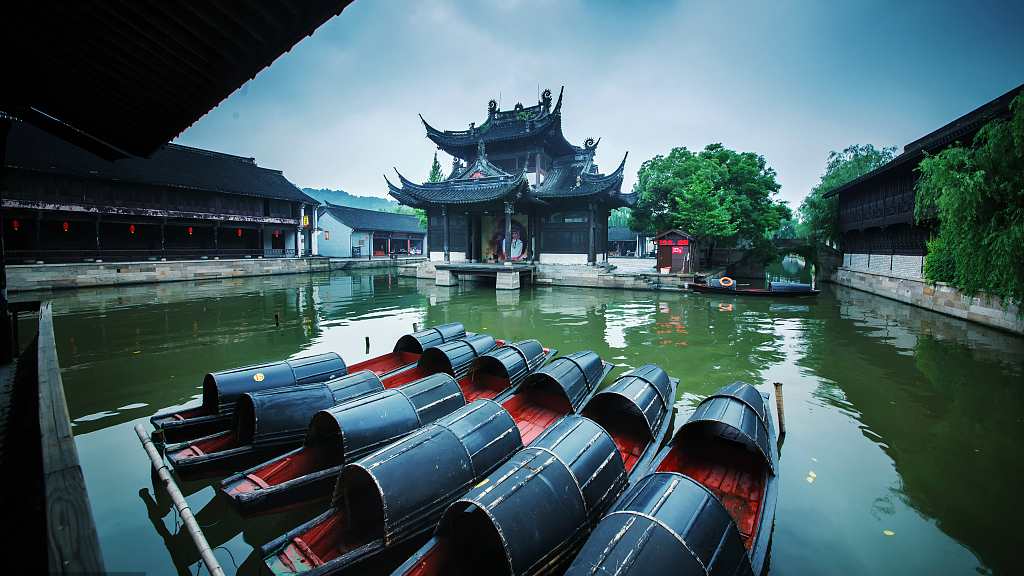
If you travel from Hangzhou to Shaoxing, both in east China's Zhejiang Province, on the G104 national highway, you will see a long and narrow path on the water when approaching Keqiao District. This is the towpath of the Eastern Zhejiang Canal that dates back more than 1,000 years.
The canal is the part of the waterway that extends the north-south Beijing-Hangzhou Grand Canal further east from Xiaoshan in Hangzhou to the estuary in Ningbo, in the same province.
The towpath was listed as a major historical site protected at the national level in 1988. The Grand Canal is not in use for transport any more, but a century ago, it was not only a busy and important inland waterway but also a cultural connection between China and the rest of the world.
“For a long time since the Tang Dynasty (618-907 AD), foreign diplomats and merchants first set foot in Ningbo when they arrived in China, and then they took the canal inland to the capital in the north,” said Huang Bin, deputy director of the Zhejiang Archeological Research Institute.
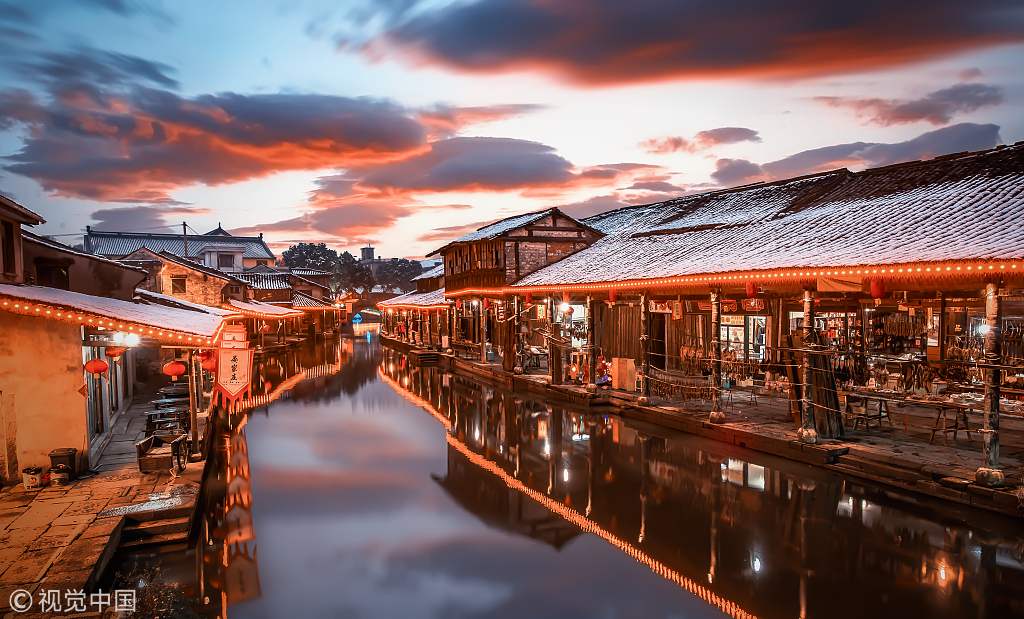
Night view of Shaoxing City, east China's Zhejiang Province. /VCG Photo
Night view of Shaoxing City, east China's Zhejiang Province. /VCG Photo
“The canal then was like an official highway when road transportation was still not so developed, and the Eastern Zhejiang Canal was the section that is most related to the Maritime Silk Road,” Huang added.
In the mid-10th century, the terrestrial Silk Road had been waning since the empire was no longer able to exert influence on its western borders. The trade route on the sea began to prosper instead.
Chinese ceramics replaced silk to become the country's biggest export. They were made in local kilns and shipped through the canal to the port of Ningbo. From there they were transferred to a larger vessel suitable for sea travel and on to final destinations that included Japan and Korea.
Shaoxing was then where the top-class ceramics of the Song Dynasty (960-1279) were produced. The Xiaoxiantan and Shanglin Lake Yue kilns were famed for making glazed pottery in a jade green celadon color.
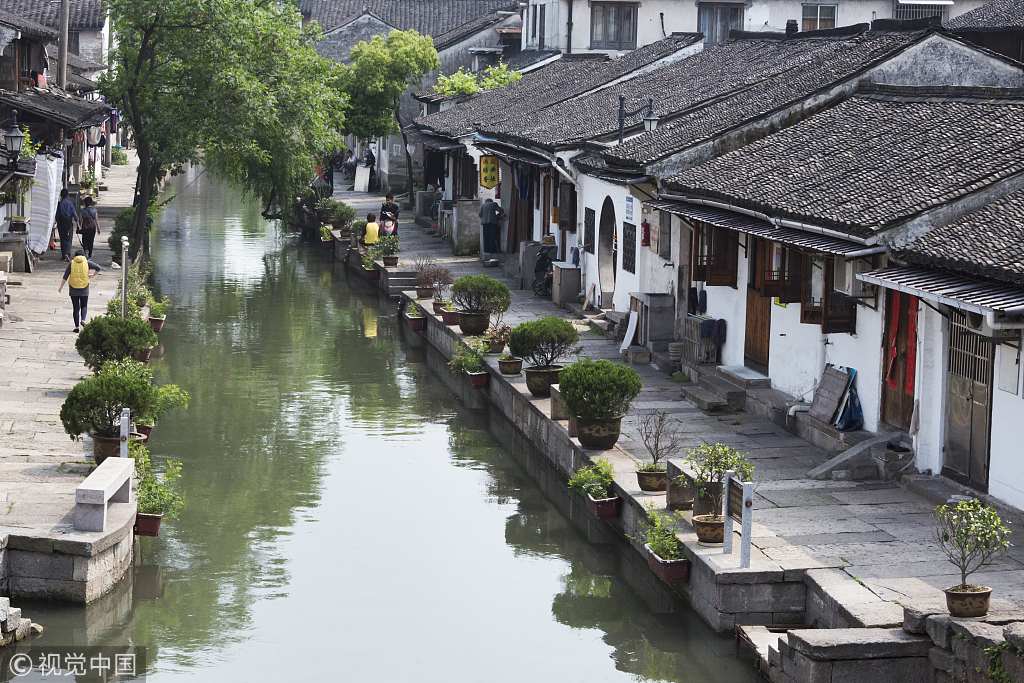
View of Shaoxing City, east China's Zhejiang Province. /VCG Photo
View of Shaoxing City, east China's Zhejiang Province. /VCG Photo
In 2003, a team of excavators found more than 100,000 pieces of Yue kiln celadon ware from a sunken shipwreck in the sea northwest of Java Island, Indonesia.
Shaoxing is also at the heart of the Eastern Zhejiang Canal. The ancient Shanyin canal, one of the earliest manmade canals in China, has been in use since the 5th century BC. The canal, together with the city's moat, rivers and lakes have made Shaoxing a city of bridges.
A cultural heritage file published in 2012 recorded 703 ancient bridges in Shaoxing.
“The ancient towpath is also a bridge of one kind,” said Huang.
The towpath in Shaoxing takes two forms: one is on the bank of the canal as most people would expect, the other kind is in the middle of the water course parallel to the bank.
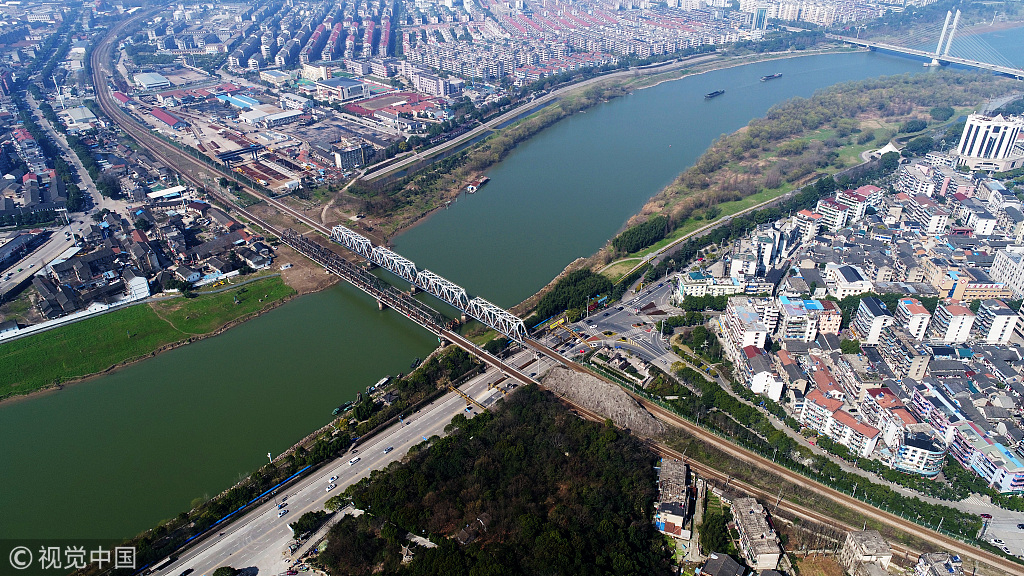
An aerial view of Shangyu District of Shaoxing City, east China's Zhejiang Province. /VCG Photo
An aerial view of Shangyu District of Shaoxing City, east China's Zhejiang Province. /VCG Photo
The best-preserved section is in Keqiao District starting from Shuangmei Village to Qianqing Town, extending about 8 kilometers.
“About half of the section is bridges on the canal,” said Huang.
These towpath bridges are mostly slab stones placed on top of countless stone piers, each about 0.5 meters above the water. From time to time, the path is heightened by an arch bridge, which allows smaller boats to go through the span from one side to the other.
At Ruanshe, the 50-meter-long Taiping Bridge across the canal has one main span and nine other smaller spans. When pedestrians walked on the bridge, the boat trackers would be working on the towpath below by one side of the canal while the boats went through the many spans of the bridge.
For Peng Tao, a Shaoxing native who has been working in Hangzhou for many years, his memory of his hometown has always been related to water.

View of Hangyong Canal in Shaoxing City, east China's Zhejiang Province. /VCG Photo
View of Hangyong Canal in Shaoxing City, east China's Zhejiang Province. /VCG Photo
What the bridges have linked are not just buildings at two ends, but lifestyles.
“In the old times, affluent families would have their own boats. The waterways were like the roads today. Every time when you came back from other places, you would park the boat near your own quay, which was only steps away from home,” said Peng.
Since the 1950s, some of the bridges were demolished and changed into roads when the city was expanding quickly.
Peng says the Bazi Bridge Historical Neighborhood is probably an area that has retained its old watertown lifestyles. It was included as one of the historical sites when the Beijing-Hangzhou Grand Canal was inscribed into the World Heritage List.
Traditional Qing Dynasty (1644-1911) residences flank the waterway throughout the neighborhood. They are connected by numerous ancient bridges across the river.
Among them, the Bazi Bridge is the oldest with a history dating back to the early 13th century. It is located at the confluence of three rivers and has four stairways leading in different directions.
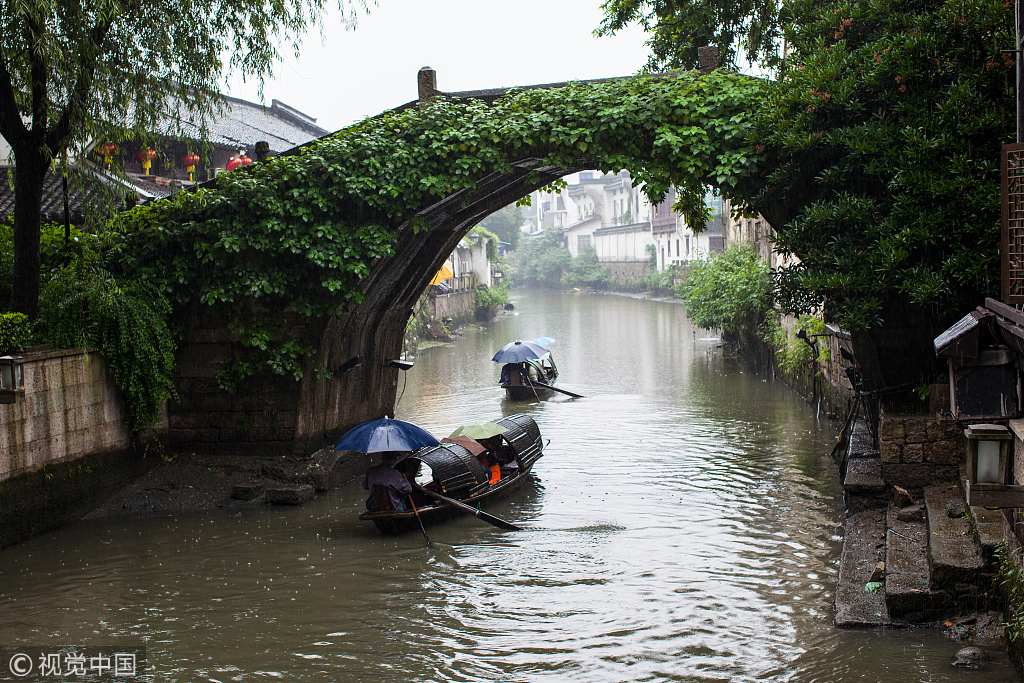
View of the waterway in Shaoxing City, east China's Zhejiang Province. /VCG Photo
View of the waterway in Shaoxing City, east China's Zhejiang Province. /VCG Photo
A few hundred meters away, the Dusi River running below the bridge converges with the Eastern Zhejiang Canal. In the past, the inner city waterways were also a part of the canal system. The neighborhood used to be a busy distribution hub for cargo coming from all places.
Huancheng River that encircles the old town is now mostly a tourist attraction. People take a cruise on the river in a traditional black-awning boat to experience what watertown life could have been like.
Peng told Shanghai Daily that in the past 10 years, the water quality in the city had been greatly improved.
In the 1980s, Shaoxing, and especially Keqiao District where the towpath is located, emerged as a large textile wholesale center. The local economy took off but fast development of the industry also caused serious water pollution.
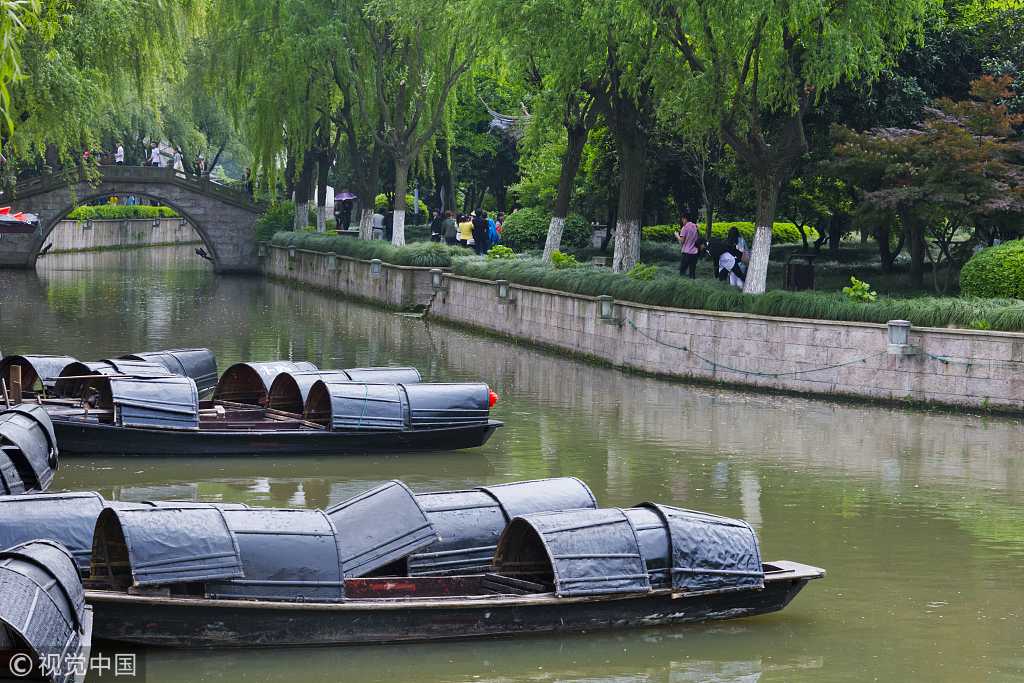
Traditional black-awning boats on the Grand Canal, Shaoxing City, east China's Zhejiang Province. /VCG Photo
Traditional black-awning boats on the Grand Canal, Shaoxing City, east China's Zhejiang Province. /VCG Photo
“At its worst time in some places, drinking water had to be carried from elsewhere by a fire engine,” recalled Peng.
The local government has closed some of the factories and punished those who had been dumping wastewater directly into the rivers.
Peng's mother lives near Huancheng River and there are two things he must do when he visits — either running along the river himself or taking his mother for a stroll after dinner.
“Da Yu, who was known for controlling the floods in ancient times, was buried in Shaoxing. The relationship of water and the people here is a history that has changed from taming nature to protecting nature,” said Peng.
(Cover: Traditional black-awning boats on the waterway in Shaoxing City, east China's Zhejiang Province. /VCG Photo)
Source(s): Shanghai Daily

SITEMAP
Copyright © 2018 CGTN. Beijing ICP prepared NO.16065310-3
Copyright © 2018 CGTN. Beijing ICP prepared NO.16065310-3